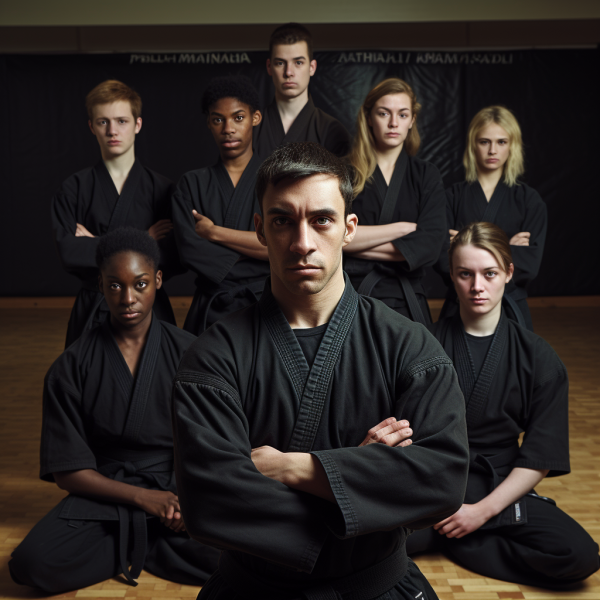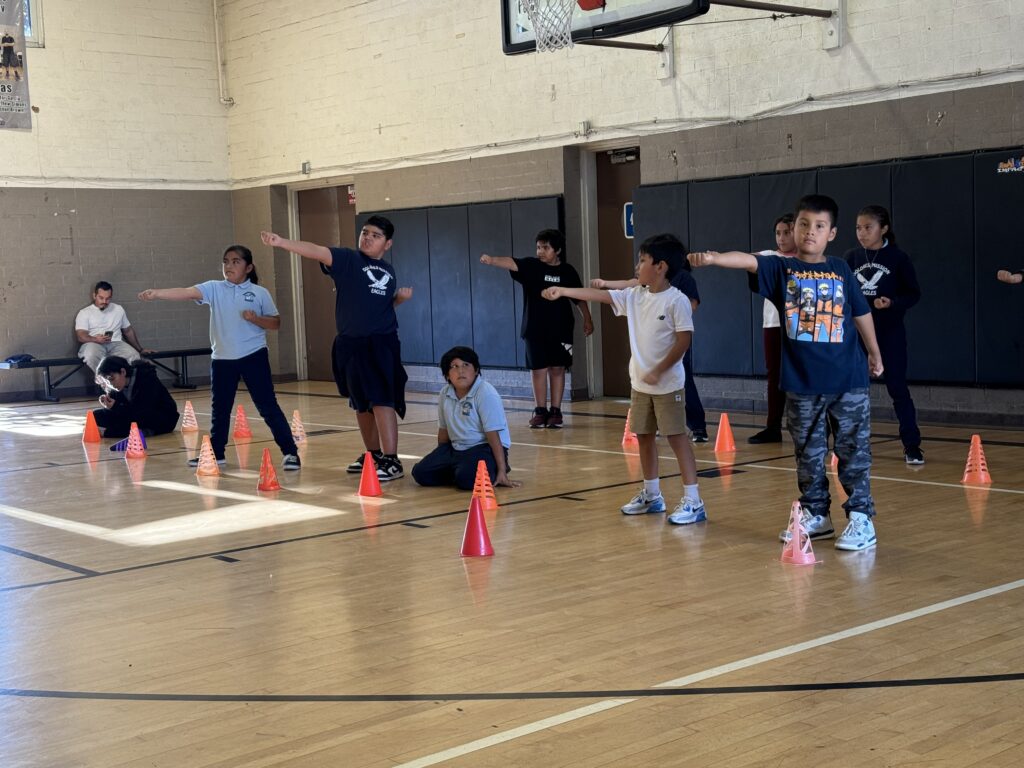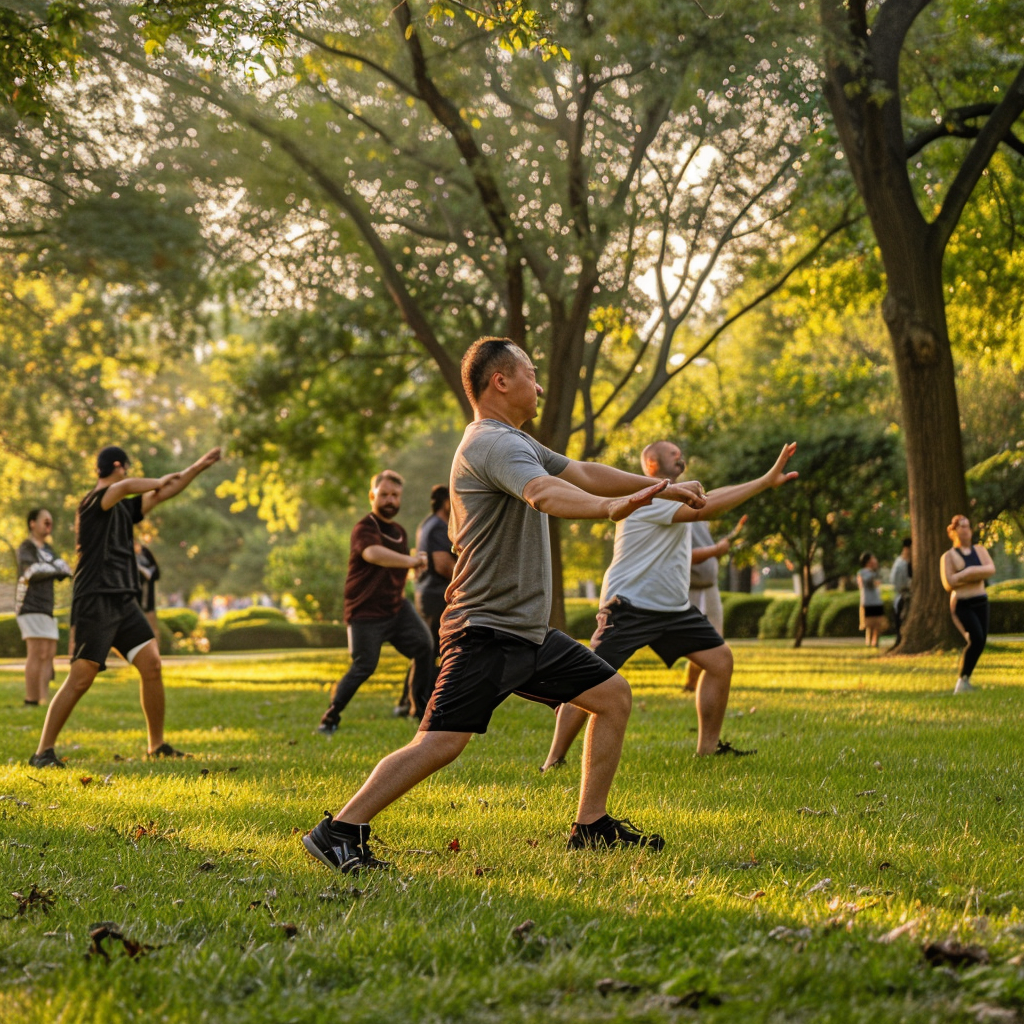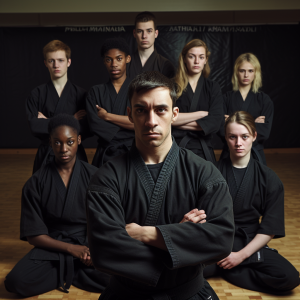 In the educational world of martial arts, the choice between group classes and private classes has been a topic of spirited debate for quite some time.
In the educational world of martial arts, the choice between group classes and private classes has been a topic of spirited debate for quite some time.
For some, the intricacies that contribute to the shortcomings of group classes mean examining private options and for others, group classes are the only way to go. In either scenario, it’s important to shed light on why both might not always measure up, and what we can do to ensure that we are providing students with the best possible opportunities.
Education is a multifaceted journey, influenced by variables ranging from teaching methodologies to individual learning preferences. Group classes, characterized by a collective learning environment, have been a cornerstone of martial arts education systems worldwide. They encourage social interaction, teamwork, and the ability to learn in diverse settings. However, as the popularity of private classes grows, questions arise about whether the traditional group setting truly caters to the diverse and specific needs of every learner.
Let’s navigate the nuances of why both group and private classes can falter and unravel the reasons why they fall short in delivering the optimal learning experience. From individualized attention to divergent skill levels, the clash between group dynamics and personal progress, and the intricate balance of motivation, we’ll examine the factors that often tip the scale in favor of private classes. It’s important to note that our aim is not to dismiss the merits of group learning in martial arts, but rather to shed light on the considerations that could influence the choice between the two formats.
While both formats can serve their unique purposes and have their own set of advantages, many studios use a hybrid approach offering both options.
Traditional Group Classrooms to Today
Dojos have historically been places of reverence, where respect, discipline, and growth reside.
Regardless of which style of martial arts you study, there are expectations of you as a student or instructor. These can range from your conduct inside and outside the dojo to your uniform and everything in between.
These high expectations usually resulted in filtering out students who didn’t have the ability to reach a high level of skill – students would enter a group program because of the inherent discipline and respect. The intensity of these programs would filter out those who could not “make it” – those who did not have the physical/mental/emotional ability to keep up. There was an unspoken standard that could be demotivating for someone who needed extra attention. Unknowingly, these programs filtered out potential talent that just needed the right guidance.
Fast forward to many of today’s group martial arts programs.
Much of what we saw in group classes of the past has now become ultra-filtered.
Many programs today, in an effort to be inclusive, have watered down their expectations so greatly that students are not required to measure up to much of anything and often these studios have a double standard when it comes to students with raw talent. This demotivates both sides of the curve. Dojos across the country promote students from belt to belt who are unable to even throw a proper punch, and why?
It is no secret that students need more specialized attention, perhaps more than ever before. We are more aware today of different learning behaviors and challenges than we have ever been, and need programs that adhere to their best interests. Many programs are attempting to do this by relaxing expectations and approaching standards cautiously, but because of the nature of group classes, it is difficult to do it effectively and in the best interests of the student.
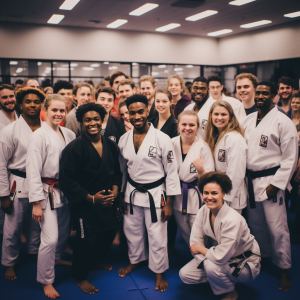 Group classes often experience shortcomings for the following reasons:
Group classes often experience shortcomings for the following reasons:
- Lack of individualized attention
- Lack of individualized learning plans
- Lack of individualized feedback
While we may think that the tragedy behind these group programs is churning out students that cannot perform at their peak, there is an even bigger issue behind this. Relaxing standards and diminishing expectations do not provide a pathway for students to work towards becoming a version of their “best selves” – developing their potential. It becomes a class they attend just to give them something to do a couple of times a week instead of a life changing, transformative opportunity to enhance their physical/mental/emotional well-being that martial arts can provide.
Between the paradox of the harsh reality of older, traditional martial arts dojos and today’s ultra-relaxed martial arts group classes, where does this leave the students who are looking to be challenged by the physical/mental/emotional benefits of martial arts?
Private Instruction of the 80s
While structured group classes reigned supreme in the martial arts world, the option for private classes crept into the environment during the 80’s.
Many dojos began to offer students the opportunity to either add private classes to their training regimen or jump completely into training privately for the extra added benefits: individualized attention and specialized learning plans. Of course, this was attractive for many; however, it quickly became an obstacle.
Private training costs were often exorbitant and unaffordable for many families. In addition, scheduling became an issue. Group classes can be difficult to fit in without extra classes to add into the mix. Finally, resources. As we mentioned earlier, group classes often suffer because of lack of resources. While many dojos added the option of private classes, this meant that instructors were stretched thinner – without hiring more instructors, more classes still meant students had less overall instructional time with their teachers. Adding private classes didn’t help this lack of resources.
Typically, students would have a scheduled block of time each week for their private lesson. The instructor’s attention is often divided between running their business, accommodating other students, and the private lesson – giving the student less instructional time.
With private lessons, home practice is the key to the student’s success.
However, given the restricted time provided by the instructor to the student, how can the student effectively recall what aspects to work on? Frequently, when practicing at home, students tend to overlook crucial components of the skill they’re attempting to acquire, leading to incorrect practice. As a result, when they come back for their next private lesson, they realize that their practice during the past week has been futile. It often requires several more private lessons to hone a solitary skill.
Achieve Martial Arts Discovered the Answer!
Our instructor team grew up as students in the traditional, structured group era and have been teaching since the launch of the private class era of the 80s. They truly understand the challenges of the two, and created a balance that solves them. They saw the lack of individualized learning plans that accompanies typical group classes, and they know that many families desire the flexibility and personalized attention that private lessons can offer.
Believing Through Achieving through Achieve Martial Arts has designed an innovative education platform that combines the benefits of group learning (camaraderie and friendly “competition” (leaderboards) and the infinite possibilities of private, one-on-one education with the added benefit of 24/7 accessibility and unlimited instructional time.
Students can design their own online martial arts journey, self-pace their personal path, and remain in continuous one-on-one contact with their instructors at their own leisure, in a space that is most comfortable for them. This online platform has revolutionized the martial arts industry, providing opportunities for students who under the previous formats had little chance of success – but now have the chance to develop it at their own pace, in their own home without the pressures of group classes or the anxiety of potentially awkward social situations.
We have distilled the martial arts skills required for the various belts into a scientifically designed set of physical challenges. Each of these challenges becomes more progressively difficult and requires an increasing amount of focus, coordination, and tenacity to conquer each one.
With each challenge, we have also included all the educational and training tools to develop the skills required to conquer the challenge, which the student can use any way they choose. Some may decide to spend more time on one challenge to perfect the physical pieces; some may decide to skip past to get closer to their next belt rank.
There are many online martial arts courses out there, most of which are simply “follow along” training videos. Some have additional feedback but are lacking a complete training program. We have the only comprehensive martial arts program that allows the convenience of 24/7 accessibility and an actual instructor to guide your journey. You don’t have to sacrifice the quality of instruction or material when you train with us. You will leave our program just as skilled (or more!) as if you were trained in a traditional martial arts group class from the past.
Our students can choose a more physical focus, a focus of achieving their belt ranks faster, or a combination of both. Either way, we have studied the scientific aspects of our program vs. a standard group martial arts class across 3 different states and found that our students accelerated approximately 2 times faster with us (see the graph below – 62 weeks to Blue Prime with us vs 90 weeks!)
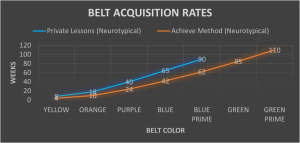
The debate between group classes and private classes isn’t a matter of one being unequivocally superior to the other. Instead, it’s an exploration of the dynamics that shape the learning experience, and the understanding that each format has its unique strengths and limitations.
Group classes, with their communal spirit and shared learning environment, foster camaraderie and social interactions that are invaluable in certain contexts. On the other hand, private classes offer a tailored approach that addresses the specific needs and goals of individual learners, encouraging accelerated progress and a higher level of accountability.
The choice between group classes and private classes should be guided by the context, the subject matter, the learner’s goals, and the available resources. It’s about finding the right balance between the advantages of group dynamics and the benefits of personal attention. Students must consider the best environment for them, and determine if differentiated and individualized instruction, personalized feedback, and a supportive atmosphere is what they’re seeking.
Ultimately, the effectiveness of any learning experience, be it in a group or private setting, hinges on the commitment of both educators and learners to adapt, innovate, and collaborate. By recognizing the strengths and limitations of each format, and by continuously refining teaching strategies and learning approaches, we can create a more vibrant and effective educational landscape.
